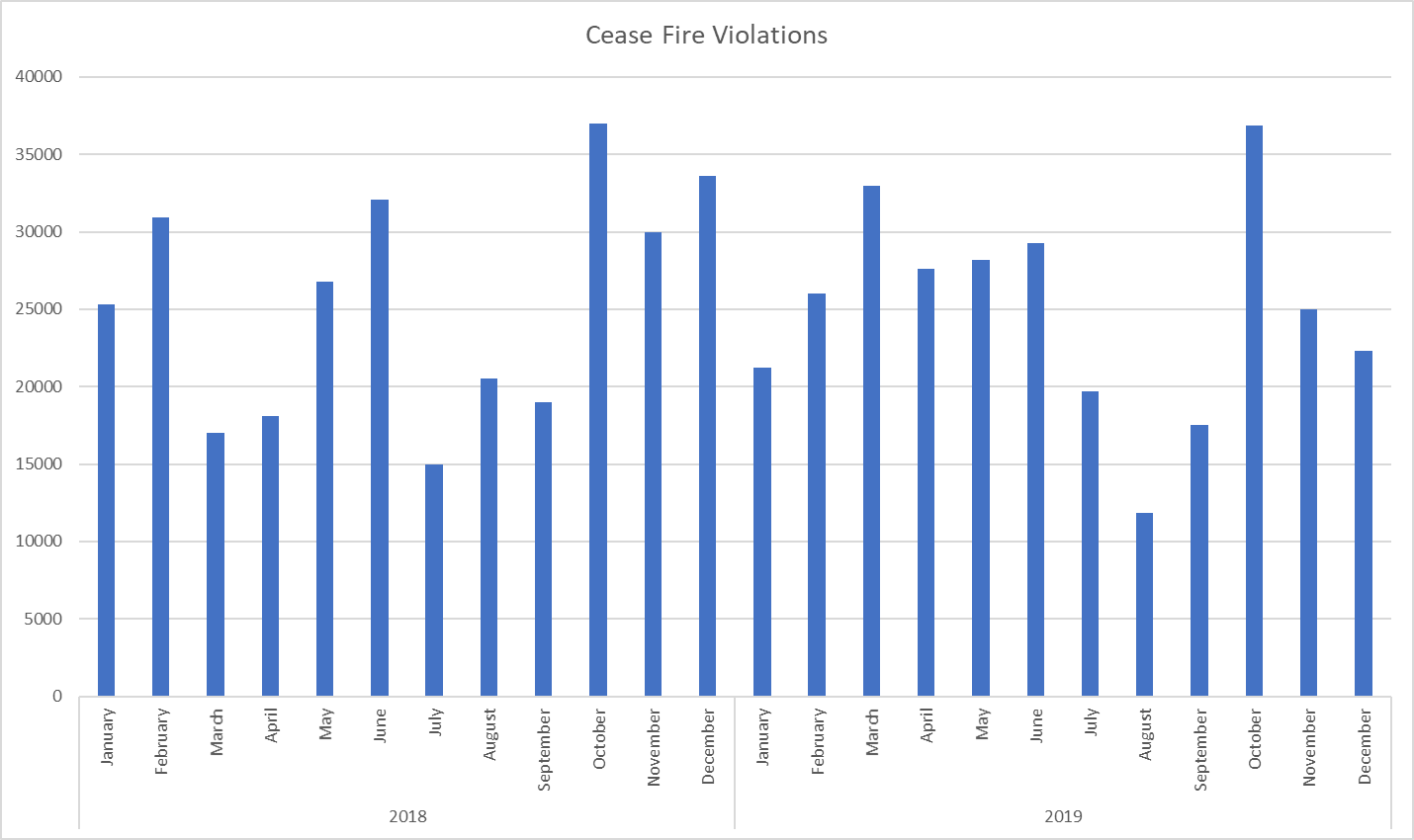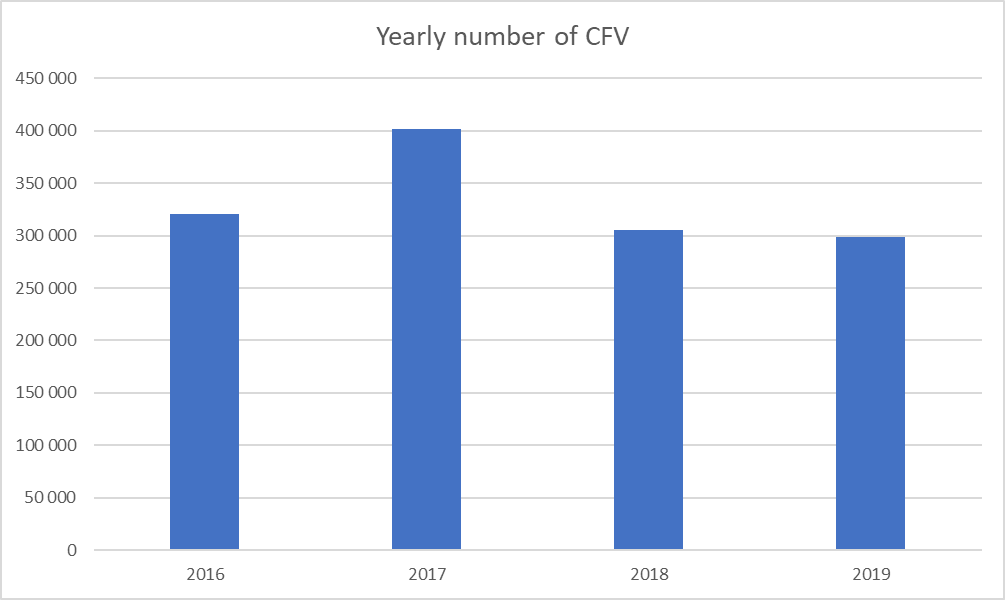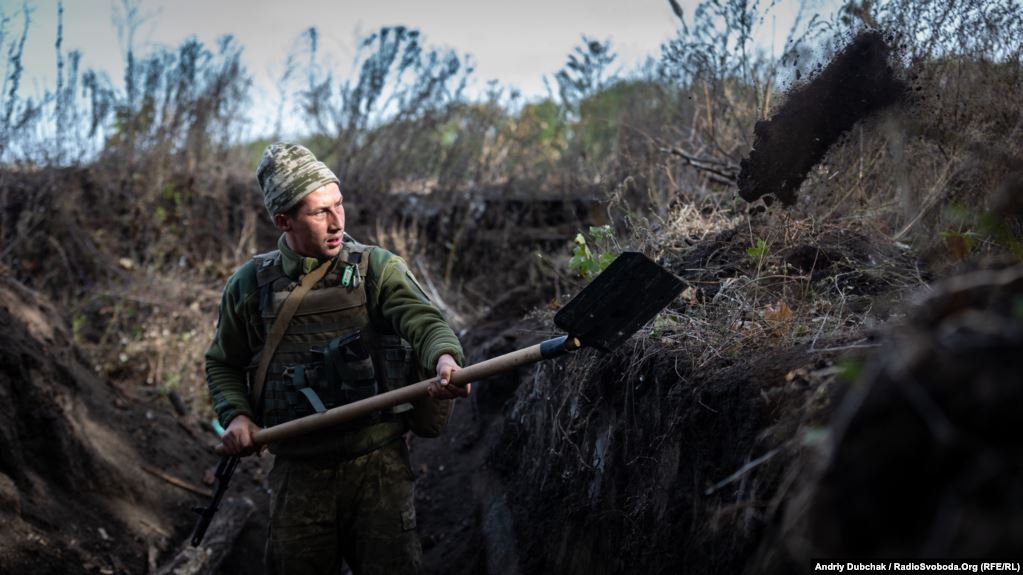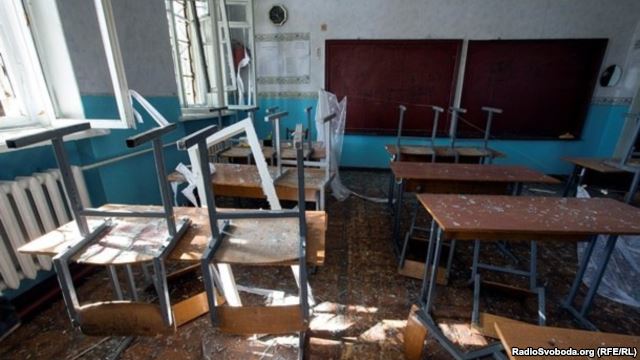A Ukrainian strategy needs to reflect the fact that Russia is strengthening its attempt to destabilize Ukraine. The reintegration of the temporarily occupied territories on Ukrainian terms lays years into the future. Today, a strategy for a peaceful resolution of the war requires, first of all, a strategy that denies Russia future military options.Si vis Pacem, Para Bellum (“If you want peace, prepare for war”).
As we try to predict the future, second-guessing what’s is taking place inside the head of President Putin, experts and analysts are looking for indications and warnings. Have we detected any changes in Russia’s posture? Has it started fulfilling its Minsk obligations? Is Russia moving military forces closer to Ukraine? What and where are the Armed Forces of the Russian Federation exercising? Has Russia changed its strategic messaging and narrative? Do we see any new diplomatic initiatives or shifts in the strategic environment relevant to future developments? Are there any changes within other dimensions (e.g. maritime domain) relevant to the ongoing hybrid war? Is the Russian Orthodox Church seeking reconciliation? Is Russia looking for new solutions to the gas transit challenges which could be beneficial for European security? Do we see any changes to its economic sanctions towards Ukraine?
The abovementioned questions are only some of many being analyzed as we try to predict future threats to both Ukraine and Europe. It is not so much about what Russia says but rather what it does.
The military situation in Donbas is, contrary to what many believe, only a minor part of the overall puzzle. However, having tracked the number of ceasefire Violations (CFV) reported by both the Ukrainian Armed Forces (UAF) and the OSCE Special Monitoring Mission to Ukraine (SMM) for some time, trends and statistics still allow for some deductions.
Analyzing the statistics, I made the following assumptions:
- The 1st and 2nd Army Corps (Russian Hybrid Forces (RHF)) has been formed based on mechanized brigades of the Russian Federal Armed Forces, subordinated to the 8th Army in Rostov on Don. 1st and 2nd Army Corps is manned, equipped, trained and exercised in accordance with Russian concepts, regulations, and tactics. They were declared fully operational in December 2015. The level of live-fire exercises on a yearly basis is, therefore, constant. While the exact number of CFV might be lower than what’s reported by SMM, the reporting still provides us with comparable data enabling an assessment of trends.
- SMM only reports CFV which has been directly observed by its monitors. Even though the ability to observe violations has increased since the mission was established in Ukraine, it does not see everything. SMM is still facing restrictions (multiple freedom of movement issues, loss of UAVs, damage to surveillance equipment, and more.) The true number of CFV are, consequently, bound to be higher than reported by SMM.
Their reporting gives us the following information:
- After an “all-time high” in October, we are once again experiencing a reduction in the number of CFV. In October, the daily number of CFV (SMM) was 1189, the second-highest during the last two years. This was reflected in the elevated number of firefights reported by the UAF (658), which was the highest since October 2018. The number of Killed in Action (KIA) (9) and Wounded in Action (WIA) (24) was, however, the fifth-lowest during the last three years.
– Corresponding numbers for this month are 719 (daily average), 173 (firefights) and 10 KIA and 16 WIA (as of 23 December).
– The number of KIA and WIA (UAF only) in 2019 is expected to be the lowest since the active phase of the war started in 2014. - Based on developments so far, it is expected that the total number of ceasefire violations (CFV) for December is expected to be around 22 300.
– The average monthly for 2019 is predicted to reach 24 872 (compared to 25 442 in 2018). - The number of SMM reported ceasefire violations over the past seven weeks have fluctuated between 6700 (4-10 Nov.), 7500 (11-17 Nov.), 6014 (18-24 Nov.), 4754 (25 Nov. -1 Dec.), 4439 (2-8 Dec.), 6521 (9-15 Dec.) and 4510 (16-22 Dec.). The average for the last 7 weeks is 5777.
-The level of violence after the Normandy Four meeting on 9 December increased temporarily. - During the first half of 2018, the latter on average amounted to 3.2% of the total number of CFV. For 2019, heavy weapons and explosions make up for 24% of the total number of CFV reported by SMM.
– The use of heavy weapons and the number of explosions has, however, decreased over the period (from 28% in the first two weeks of November to 18% in the corresponding period in December).
– Comparing the reporting by UAF and SMM, some discrepancies stand out. In December, UAF did not report any violations concerning the use of heavy weapons banned by the Minsk Protocol in nine out of eighteen days. During these days, SMM reported 1077 projectiles and explosions. The abnormality might be explained by several factors, from exercises and controlled detonations to inaccurate reporting.


No “Zelenskyy effect” in cease-fire violations
For the last four years, the trend is as follows:
- The level of CFV in 2017 stands out as it was significantly higher than the rest of the period. It is, therefore, reasonable to claim that the number of ceasefire violations in 2019 is expected to be only marginally lower than the “norm.”
Based on the above, the following deductions can be made:
- We don’t see any “Zelenskyy effect” after the presidential election. The president’s honest attempt to resolve the conflict by political means has, unfortunately, not been reflected along the front line in Donbas. The total level of CFV remains more or less constant. Together with its constant use of non-military means, this indicates that Russia hasn’t changed its aim for the hybrid war. Its increasing usage of heavy weapons may, on the contrary, indicate that the pressure on President Zelensky is mounting.
- Since the active part of the Russian aggression started in 2014, Russia has more often than not used military power in an attempt to coerce Ukraine before the start of negotiations. The Russian military offensives before Ukraine was forced to sign the Minsk Protocol and the Minsk Memorandum are just two out of many examples of an established pattern. The escalation in violence in October came, therefore, as no surprise because of the upcoming Normandy Four meeting.
- The majority of Ukrainian casualties today are a result of sniper fire, mortar, grenade launches, and landmines. During the first period of the war, however, artillery and rocket attacks counted for nearly 85% of the casualties. The observed increase in the use of heavy weapons and the number of explosions (combined with the extensive use of snipers) might indicate a return to previous trends, reducing the likelihood of the scheduled disengagement of forces having the desired effect.
- The Russian Hybrid Forces (RHF) wouldn’t be able to uphold the level of attacks on UAF unless they were resupplied regularly. The statistic indicates that Russia resupply of RHF ammunition continues at an unabated volume. This adds credibility to the recent statement from Ukrainian Intelligence about the “… leadership of the Russian Federation, despite statements about supposedly supporting peace initiatives of Ukraine, is increasing supplies to the occupying forces in the temporarily occupied territory in Donetsk and Luhansk regions.“
Russian strategy of destabilization will likely continue

Russian attempts to destabilize Ukraine from within will most likely, continue unabated. The aggressor will uphold its present strategy while exploiting any weaknesses or critical vulnerabilities. Bearing this in mind, I believe there are two major takeaways from the recent Normandy Four Summit.
Firstly, President Zelensky might have unintentionally given Russia bigger leverage. Agreeing to implement the so-called Steinmeier Formula and the special status in Ukrainian legislation, is highly problematic in the eyes of many Ukrainians. An opinion poll published by The Ilko Kucheriv Democratic Initiatives Foundation (DIF) three days before the Normandy Four meeting showed that the majority of Ukrainians reject the concessions made by President Zelensky. 62% of Ukrainians want the territory of occupied Donbas to return to Ukraine with the same status as before, and 53.2% believe that enshrining a “special status” for Donbas in the Ukrainian Constitution is unacceptable.
Having expressed the desire to change the Minsk protocol, he might have walked into yet another trap. “In an interview with Channel One-Russia, Russian Presidential Spokesman Dmitry Peskov announced that it was possible to change the Minsk protocol only if the Ukrainian side cooperated with the puppet administration of the ‘People’s Republics’ (‘DNR/LNR’).” Vitaly Portnikov, a Ukrainian journalist, political commentator, author, and opinion-maker, accurately pointed out that this might not only contribute to the long-desired legitimization of the “People’s Republics,” but also reinforce the Russian narrative that it is not an aggressor state, but simply one of the intermediaries.
Additionally, having avoided crossing the Ukrainian red line, the President of Ukraine has, to a certain degree vested his political standing on Russia fulfilling its obligations under the Summit Decree. This might be seen as a gamble in light of Russia’s track record. If Russia once again decides to break the agreement (e.g. like instructing the RHF to occupy the front line positions UAF leaves as a part of the planned disengagement process), this will probably come at a substantial political cost for President Zelenskyy.
Secondly, the outcome of the Normandy Four meeting is generally described in positive terms, supporting President Zelensky’s strategic messaging.
I have previously pointed out that the President has changed the Ukrainian narrative on the ongoing war. His wording is very different from former president Poroshenko, seemingly trying to avoid terms and expressions that might be seen as inflammatory in Kremlin. These observations have been supported by what he failed to mention during the Normandy Four meeting. President Zelenskyy both avoided calling Russia an aggressor and made only a fleeting reference to Crimea after the meeting
While President Zelenskyy somberly described the outcome of the summit as a draw, French President Emmanuel Macron and German Chancellor Angela Merkel, praised the talks’ progress.
Not surprisingly, the following day this was reflected in the headlines across both the USA and Europe. “Russia and Ukraine make small steps toward peace, but no big leap”. “‘No Miracle, But We’ve Advanced’: Russia-Ukraine Peace Summit Results”. “Ukraine conflict: Can peace plan in east finally bring peace?”. “Zelensky calls meeting with Putin big step toward peace”. “Cautious optimism for Russia-Ukraine ceasefire”. “Macron and Merkel positive after Zelenskyy’s first face-to-face with Putin”.
The Ukrainian strategic messaging makes sense from an economic point of view. It does, however, simultaneously increase the risk of unintentionally weakening the international cohesion in favor of lifting Russian sanctions. The international community will never regard Russia as a bigger threat to Ukrainian sovereignty and independence than Ukraine itself does.
If Ukraine believes a peaceful resolution of the war is within reach, the West will embrace the notion and act accordingly. As I tried to show, the military realities in Donbas do, unfortunately, not support the hope for a peaceful resolution anytime soon.
More importantly, if we refocus from the military situation in Donbas to the broader strategic picture, we might end up describing an even bleaker picture. This includes the Russian military presence along the borders of Ukraine, the evolving relationship between Russia and Belarus, the militarization of Crimea, the development in the maritime environment in both Sea of Azov and the Black Sea, and Russia’s ongoing attempt to destabilize Ukraine from within with the help of non-military means.
The broader picture of the hybrid war

President Zelensky needs to do exactly that: refocus from Donbas to the broader strategic picture. Ukraine needs to do its uttermost to ensure international coercion and support in the face of continued Russian aggression.
He needs to step away from his electoral promises and develop a comprehensive strategy based on the realities “on the ground.” The Supreme Commander must describe the full scope of the hybrid war, not limited to the military dimension and Donbas only. The use of non-military means across all sectors needs to be explained as he outlines the cross-sectoral response to Russian aggression. The strategy needs to be joint, describing the evolving threats in the maritime domain and their potential destructive effect on the Ukrainian economy. The strategy needs to outline how Ukraine will close the critical vulnerabilities existing within the UAF. It needs to be both realistic and ambitious enough to deter future aggression.
In accordance to Jean-Dominique Giuliani, Chairman of the Robert Schuman Foundation and President of ILERI (School of International Relations), “By annexing Crimea, Vladimir Putin has violated the fundamental texts of the United Nations, the statutes of the Council of Europe of which Russia is a member, at least two regional treaties that established peace in Europe and two bilateral treaties signed with Ukraine, as well as the Constitutions of Ukraine and Crimea.”
The legal assessment was published in February 2015, before Russia’s attempted coup in Montenegro, and before it conducted multiple cyber-attacks and meddled in referendums and elections in both United States and across Europe, and before the Kerch Bridge was built, and before the attempted assassination of Skripal in UK, and before Russia started restricting the freedom of navigation in both Sea of Azov, Kerch Strait, and the Black Sea, and before “the first openly Russian-flagged attack against Ukrainian-flagged forces” international waters 25 November 2018.
As Maksym Eristavi, Research Fellow, Eurasia Center, Atlantic Council, pointedly stated, ”There remains a huge gap between Putin’s promises and his actions. He has lied, misled and betrayed his commitments many times before.”
The abovementioned CFV statistics underscore his observations. Russia is not only lying about its aggression in Ukraine but has never tried to fulfill its Minsk commitments nor the numerous Cease Fire agreements signed since. The reporting by both UAF and SMM demonstrates that Russia is strengthening its attempt to destabilize Ukraine.
The indications and warnings underpin the assessment. The Russian narrative and messaging remain constant. During an interview ten days after the Normandy Four meeting, Putin not only focused on the political solution of the conflict. His statements also undermined the security element of the Minsk Protocol. He reiterated the importance of the “special status” being integrated into the Ukrainian Constitution as well as the need for direct communication between Kyiv and DNR and LNR (the Russian puppet leadership of the temporarily occupied territories). President Putin argued that “there are no foreign troops [in Donbas],” only “local militias, local self-defense forces staffed with local residents” armed with tanks or heavy artillery from “government agencies that sympathize with them”, stressing that “these weapons are theirs, not foreign.” Simultaneously (and at odds with his previous statement), he argues that “there are French and Germans [mercenaries] fighting there on both sides,” “but they are not the bedrock of these armed groups.”
The very same day, at a meeting of the OSCE Permanent Council, Russia’s Permanent Representative to the OSCE Aleksander Lukashevich stressed, “the need to further promote de-escalation, to achieve a political settlement and to have parties to the internal Ukrainian crisis agree…”. Echoing Putin, he argued, “…progress, of course, is impossible without stepping up talks between Kyiv, Donetsk, and Luhansk in the Contact Group.”
A Ukrainian strategy needs to reflect the fact that Russia is strengthening its attempt to destabilize Ukraine. The reintegration of the temporarily occupied territories on Ukrainian terms lays years into the future. Today, a strategy for a peaceful resolution of the war requires, first of all, a strategy that denies Russia future military options.
Si vis Pacem, Para Bellum (“If you want peace, prepare for war”).
Read also:
- Why negotiate? Expectations for the Normandy Four meeting
- Minsk protocol and “Steinmeier’s formula” – conflict resolution or conflict conclusion?
- Hybrid War in Ukraine – predictions for 2019 and beyond





